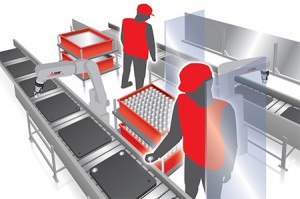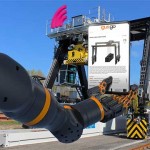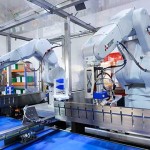Cobots enable effective high-mix, low-volume production
 With increased competition, often on a global scale, manufacturers need to differentiate themselves by tailoring products more closely to customer demand. This carries with it an implicit reduction in batch sizes and has seen the rise of ‘high-mix, low-volume’ production. Cobots can enable manufacturers to effectively meet individual customer requirements with greater product variety in smaller batches.
With increased competition, often on a global scale, manufacturers need to differentiate themselves by tailoring products more closely to customer demand. This carries with it an implicit reduction in batch sizes and has seen the rise of ‘high-mix, low-volume’ production. Cobots can enable manufacturers to effectively meet individual customer requirements with greater product variety in smaller batches.
While high-volume production, with its repetitive tasks, has seen increased adoption of traditional industrial robots, we have to think differently in a high-mix production environment, where the programming and reconfiguration effort to change from one product to the next can impact productivity. In high-mix production, there might be several line changeovers needed in a given shift.
For many manufacturers, this has meant an increased reliance on manual labour. But that, in turn, increases operational costs when compared with high-volume production – and the greater the mix, the higher the emphasis on manual labour, and the greater the production cost for a given volume.
High-mix, low-volume (HMLV) production requires more stringent quality control processes to be put in place, with the opportunity for production errors increasing as the batch sizes reduces. At the same time, the levels of changeovers between different products can often become a bottleneck.
However, the new breed of collaborative robots (or cobots) is responding to the trend of HMLV production, delivering the required flexibility and the ability to reconfigure processes quickly and easily.
Improved flexibility, consistency and reliability
Cobots are designed to assist human operators on the shop floor by taking on simple, repetitive and physically strenuous tasks. This offers improved consistency and reliability in manufacturing whilst enabling humans to concentrate on more complex jobs. A cobot is also flexible and can quickly learn to adapt to a variety of tasks, from pick-and-place to machine tending.
A key benefit of cobots is their ease of programming, enabling frequent redeployment and fast set-up without advanced robotic programming expertise. One recent development which can improve the ease and speed of configuration is hand-guided teaching, where the cobot arm is simply moved to the desired position and added to the operational sequence at the press of a button. This technology means that no complex programming is required and it can also be combined with touch-screen graphical interfaces to implement more sophisticated operations.
A digital twin can be used to enhance the speed of set-up and redeployment. Here, a digital representation of the physical cobot is created, allowing its performance to be evaluated virtually. The digital twin also simulates cobot interaction, ensuring that it can safely and predictably fulfil the desired task before deployment.
This ease of programming and redeployment is one of the main enablers of HMLV production and holds the key to reducing operational costs. At the same time, the increased accuracy of the latest cobots is an important contributor to improving quality in a high-mix environment. As an example, Mitsubishi Electric’s MELFA ASSISTA cobots can provide a repeat accuracy of ±0.03mm, making them ideal even for the most delicate and precise tasks.
When moving towards HMLV production, manufacturers are finding that they can differentiate themselves from competitors with the offer of products tailored to specific customer requirements, even in the smallest of batches. With the ability to quickly switch production to a different product, manufacturers can be more responsive to changes in the market, delivering an additional competitive advantage.
Cobots are proving to be a key enabler for high-mix automation whilst offering the maximum return on investment. In an HMLV production environment, cobots drive up flexibility and reduce operational costs.
Visit the Mitsubishi Electric website for more information
See all stories for Mitsubishi Electric















